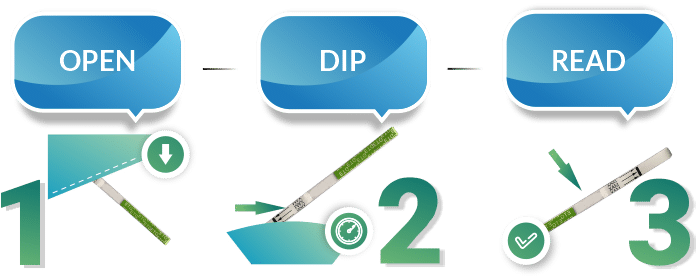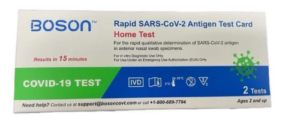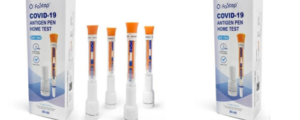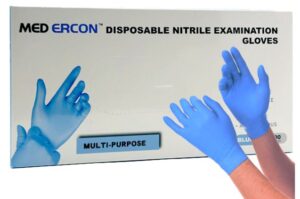What is TCA?
TCA stands for tricyclic antidepressants. This prescription drug is often recommended as the treatment of depression and treatment for major depressive disorder (MDD).
Tricyclic Antidepressants
Tricyclic antidepressants TCA were one of the first antidepressants released. Today they are still available and widely used for treating depression.
Though they aren’t considered as addictive as other prescription medications, long-term TCA usage can, unfortunately, lead to dependency.
TCA abuse is a concern among many in the United States today. For this reason, many urine tests and multidrug tests contain drug panels that detect TCA’s as many incorporate screening for this drug into their drug testing procedures.
TCA Drug Test Strips
- TCA drug test strips are convenient, safe, and easy to use.
- 12 Panel Now’s tricyclic antidepressants drug test strips enable you to perform TCA testing with complete ease on your own.
- Quick results within five minutes.
- Cutoff level of 1000 ng/ml.
- This TCA drug test strip includes internal procedural controls. If there’s a sufficient amount of specimen and the procedure is followed properly, a positive result will show as a colored band in the control region.
- However, there are no external controls in this kit. That’s why we highly recommend further testing to verify positive results.
- Forensic use only
How to Use a TCA Drug Test Strip?

- Remove the drug test from its sealed pouch and use it as soon as possible. For best test results, perform the assay within an hour.
- Next, hold the strip by the end, where you can see the product name. To avoid contamination, do not touch the strip membrane.
- Then, holding the strip vertically, dip the test strip in the urine sample for at least 10-15 seconds. Do not immerse above the maximum line (MAX) on the test strip. That’s about 1/5th of the way up the strip.
- After the drug test has finished, remove the strip from the specimen and place it on a non-absorbent flat surface. Start the timer and wait for the colored band(s) to appear. Read the result at 5 minutes. Do not interpret it after 10 minutes.
Why Test for Tricyclic Antidepressants?
Tricyclic Antidepressants are non-controlled drugs. They are legal prescription medications. As a result, anybody who has a prescription can buy it anywhere.
Although these substances are not addictive, users develop resistance to it. Later on, they become dependent on it.
This dependence, unfortunately, has led to fatal overdoses in the US.
Therefore, the need for drug testing strips from 12 Panel Now. It can help self the lives of those who are taking TCAs as a means to cope with depression.
Sadly many overdosing deaths that occur today in the United States are from TCA abuse. This is a drug where misusing it is of concern.
Tricyclic antidepressants (TCAs) are included in some drug tests because they can cause false positive results for other drugs, such as cocaine. A TCA screen may be ordered by a healthcare provider to ensure that a patient is receiving a safe and effective dose of a TCA medication or to diagnose a TCA overdose, which can cause symptoms such as dry mouth, blurred vision, constipation, trouble urinating, drowsiness, lightheadedness, and seizures. TCAs are a class of antidepressants that affect the chemical messengers (neurotransmitters) used to communicate between brain cells, ultimately leading to changes in brain chemistry and communication in brain nerve cell circuitry known to regulate mood, to help relieve depression.
When TCA is mentioned on a drug test, it refers to a test that measures the levels of tricyclic antidepressants in a patient’s blood or urine sample. The reason for testing for TCAs on a drug test may vary, but it is usually done to monitor TCA levels in patients who are taking these medications to ensure that they are receiving a safe and effective dose. In some cases, the test may also be used to identify a TCA overdose in individuals who have symptoms such as dry mouth, blurred vision, constipation, trouble urinating, drowsiness, lightheadedness, or seizures.
Some of the most commonly prescribed TCAs include the following:
- Imipramine (Tofranil)
- Amitriptyline (Elavil)
- Clomipramine (Anafranil)
- Desipramine (Norpramin)
- Doxepin (Silenor)
- Nortriptyline (Pamelor)
- Protriptyline (Vivactil)
- Trimipramine (Surmontil)
Lexapro is not a tricyclic antidepressant. Lexapro is the brand name for escitalopram, a selective serotonin reuptake inhibitor (SSRI). Tricyclic antidepressants (TCAs) are a group of medicines that have a similar structure and work in a similar way but have generally been replaced by antidepressants that cause fewer side effects.
Tricyclic antidepressants or TCA is a class of older-generation drugs used to treat a variety of mood, anxiety, personality, or neurological disorders. TCA is used when other treatment options are not effective.
Similar to other antidepressants, a person taking TCA will feel an improvement in their depressive symptoms from 6 to 8 weeks after starting treatment.
Treatment with TCA however comes with common side effects such as drowsiness, blurred vision, constipation, dry mouth, a decrease in blood pressure which may lead to lightheadedness, and urine retention. Other possible side effects when taking TCA include changes in weight, excessive sweating, tremor, and sexual dysfunction.
Flexeril is a prescription muscle relaxer. However, its structure is similar to a class of antidepressants called tricyclic antidepressants. So no, it’s not a TCA.
Is Prozac a Tricyclic Antidepressant?
Prozac, also known as fluoxetine, is not a tricyclic antidepressant. Instead, it belongs to a different class of antidepressants called selective serotonin reuptake inhibitors (SSRIs).
What Shows up as TCA on a Drug Test?
Drug tests can detect TCAs and their metabolites in the urine, for up to ten days.





























